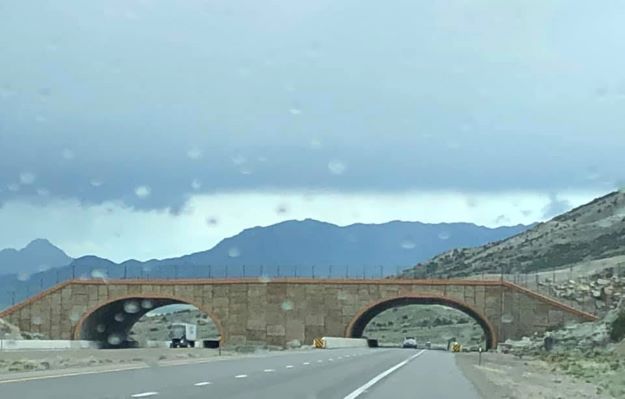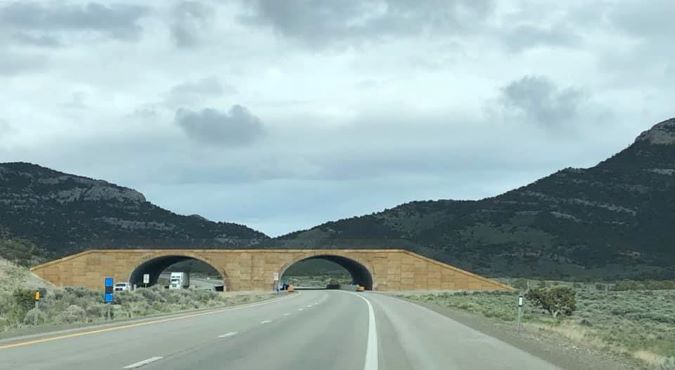Nevada’s Animal Passageways –
Protecting Animals from Cars, and Vice-Versa
I drove underneath the bridge shown in the photos on my way to Reno for the Northern Nevada Celtic Celebration. I was on Interstate 80 in Nevada, not terribly far from the Utah border. I was, to put it bluntly, in the middle of nowhere and wondered what this bridge was for.
As I went under it, with a closer look, I noticed that wasn’t a highway going across the bridge. It took me a few moments to realize that this bridge wasn’t for people at all. It was for animals to cross safely over the interstate!

I’d seen photos of these in magazines and the like, but I had never seen one in person. It turns out that Nevada has three of these over I-80. Here’s a link to a study, in pdf format, on the effectiveness of these animal passageways.
I looked through my accumulated mail as soon as I returned home and, coincidentally, National Wildlife Magazine (June-July 2019) had a feature story on this preservation issue. The feature is entitled Running the Gauntlet.
Preserving habitat is, of course, vital. The problem is that animals move – they forage for food, the look for mates, and they migrate. All of which puts them in contact with humans and, more dangerously, human’s high-speed vehicles. But the ability of animals to move is critical to sustaining a species’ genetic diversity and a healthy ecosystem.
Crops, dams, fences, and urban/suburban developments are a few of the impediments to wildlife movement. Another is, of course, roads. There are perhaps 2 million collisions annually between large animals and cars annually. In my lifetime, I’ve killed two deer, a turkey, and a raccoon with my car. I don’t know if that is average or not, but I did not feel very good about creating road kill and I felt even worse about my car repair bills.
Check out National Geographic’s 2019 article How wildlife bridges over highways make animals—and people—safer.
Photos by Linda McDonnell
